Frontier
Living on the Frontier
Settlement began in Tennessee around 1768 as early pioneers in search of a new life and fertile farm lands crossed the mountains into the area which is now East Tennessee.
These rugged, adventurous people carried their meager possessions on horseback and in Conestoga wagons. They entered the state by following old Indian trails into river valleys.
These lands were already occupied by Cherokee Indians. And the early pioneers entered in violation of the English Proclamation of 1763, which forbid settlers from living west of the Appalachian Mountains. Through treaties, some of which were illegal, the Indians gradually ceded land in the state to the settlers so that by 1836, the Cherokees didn’t own any more land in the state.
Most of the early settlers came in groups with friends or families. Once here they depended upon each other for help. Frontier settlements, built near forts, were part of larger communities. Whites and blacks (whether free or slave) worked together for the sake of security.
Women formed friendships with each other to stave off loneliness when men were away. The settlers gathered together often for community functions and celebrations.
They focused on economic prosperity . They cleared land; farmed cotton, tobacco, and corn; transported and sold goods; and built industries around the state’s natural resources. The activities of the settlers transformed the landscape and had a dramatic impact on the lives of Indians.
Read more about the New Madrid Earthquake that happened in Tennessee during frontier times.
Read more about the New Madrid Earthquake that happened in Tennessee during frontier times.
Picture Credits:
- A photograph of participants in a frontier reenactment at Fort Watauga at Sycamore Shoals State Historic Park in June 2009. Photograph by Brian Stansberry on Wikimedia Commons
- A drawing showing Watauga men gathered around a campfire. The artist was Howard Pyle, and the drawing was reproduced in "Scribner's Magazine" in December 1889. Tennessee State Museum Collection
- A drawing entitled "Pioneer Life" from a book by Henry Howe, "Historical Collections of the Great West" printed in 1854. It shows a group traveling by wagon. They have stopped for the night as the woman cooks a meal over the file and children play. One man on the left is bringing wood for the fire, while the one of the right appears to be cleaning his gun. Tennessee State Museum
- A drawing of a group of longhunters out on the trail. This was entitled "Early Pioneers of the Blue Ridge," and was published in Century Magazine in Nov. 1901. Tennessee State Museum
- Drawing entitled, “Indian warriors lying in ambush.” It shows a settler farming, while a three Indians hide behind trees. Tennessee Blue Book
Frontier >> Living on the Frontier >>
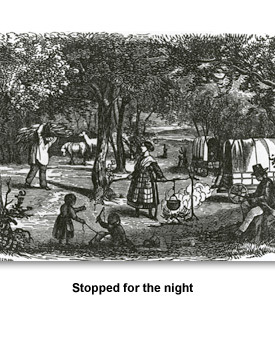
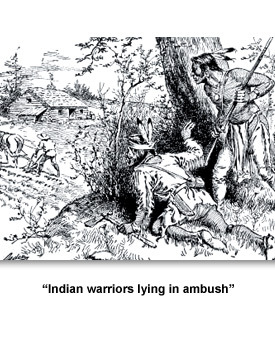
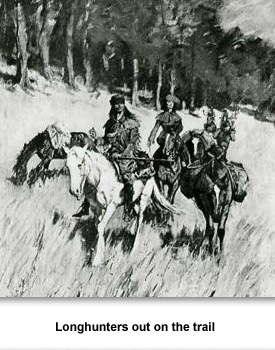
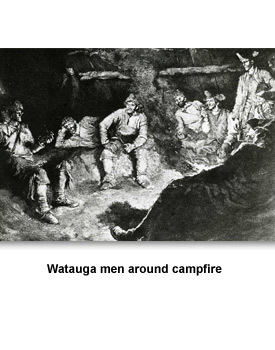
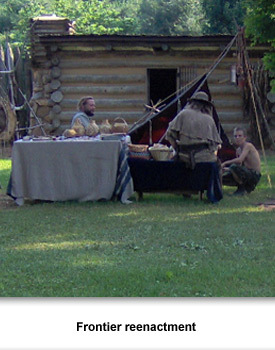
 Sponsored by: National Endowment for the Humanities
Sponsored by: National Endowment for the Humanities